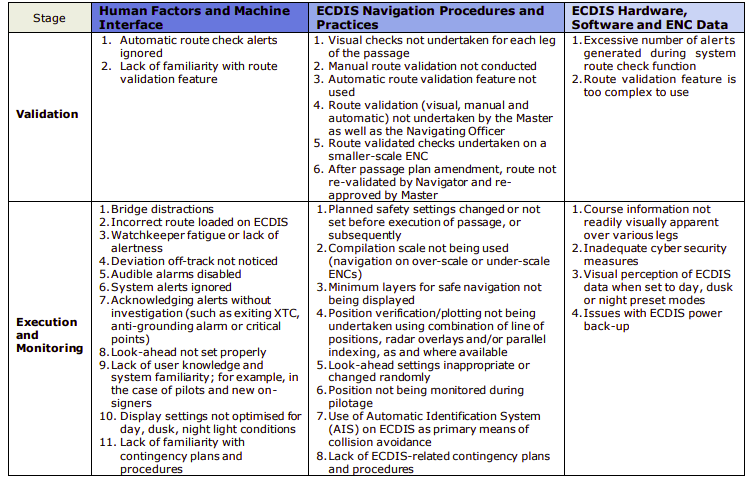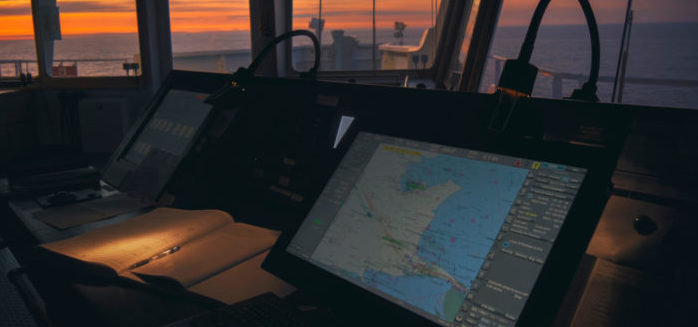OCIMF has published guidance on how to improve policies and procedures concerning the safe use of Electronic Chart Display and Information Systems (ECDIS). SQE Marine issued a circular providing an overview of the key findings and sharing valuable respective recommendations.
Scope of Guidance
With the increase of vessels using ECDIS as primary and secondary navigational charts, several navigational incidents have been reported, where one of the contributory factors has been ECDIS-related. As such, the guide summarizes the contributing factors identified from the analysis of navigational incidents as well as Ship Inspection Report Programme (SIRE).
Contributing factor analysis
OCIMF analyzed navigational incidents (11 published reports and seven company investigation reports) between 2016 and 2018, involving tankers fitted with ECDIS. SIRE observations related to ECDIS were also analyzed to identify common themes. The findings have been categorized into three main sections:
- Human factors and machine interface.
- ECDIS navigation procedures and practices.
- ECDIS hardware, software and ENC data.
The findings were also analyzed by taken into consideration the four stages of voyage planning:
- Appraisal
- Planning
- Validation
- Execution and monitoring
SOLAS Chapter 5, Annexes 24 & 25 titled “Voyage Planning” and “Guidelines for voyage planning”, the traditional stages of voyage planning do not include Validation stage. However experienced mariners, at the end of planning stage reviewed the developed plan, and presented it to bridge team. This was an unofficial validation stage. Nonetheless, planning on ECDIS requires a detailed review and validation in order to identify possible gaps during planning related to ECDIS specific characteristics and factors.


The flow of actions is based on the following:
System Installation —-→ Procedures to support the System—–→ Human implementation of procedures
From finding analysis without inserting any severity factors, it is revealed that the most challenging area i ‘’Procedures & Practices’’.

Actions required
-Ship Managers should:
1.Ensure that installed systems can support the latest industry specifications and requirements
2. Implement procedures (within SMS or as a stand-alone plan) in order to provide guidance for the use of ECDIS systems and the integration of them within Bridge Operating Procedures.
3. Implement an effective system to verify, check and review the following:
- a. Officers’ assigned as head of navigational watch competence on the basic ECDIS procedures
- b. Their familiarity with ship specific ECDIS system use
- c. Effectiveness of ECDIS procedures
4. Provide adequate training and feedback to crew members regarding use of ECDIS and analysis of incidents having as contributing ECDIS related factors and best navigational practices as implemented through the industry.
-Masters should:
- Ensure strict implementation of Company’s procedures regarding use of ECDIS
- Review, validate and approve all developed voyage plans
- Conduct a detailed briefing on the voyage plan prior departure
-Deck Officers assigned as in charge of navigational watch should:
- Follow the Company’s developed procedures for the ECDIS use
- Follow exactly the approved voyage plan and in case of changing situations to implement the related Company’s procedures (Calling the Master procedure, Master’s Standing orders etc)
- Be proactive and implement all best navigation practices, as provided through Company’s related training sessions.
Find the circular by SQE Marine herebelow:































































